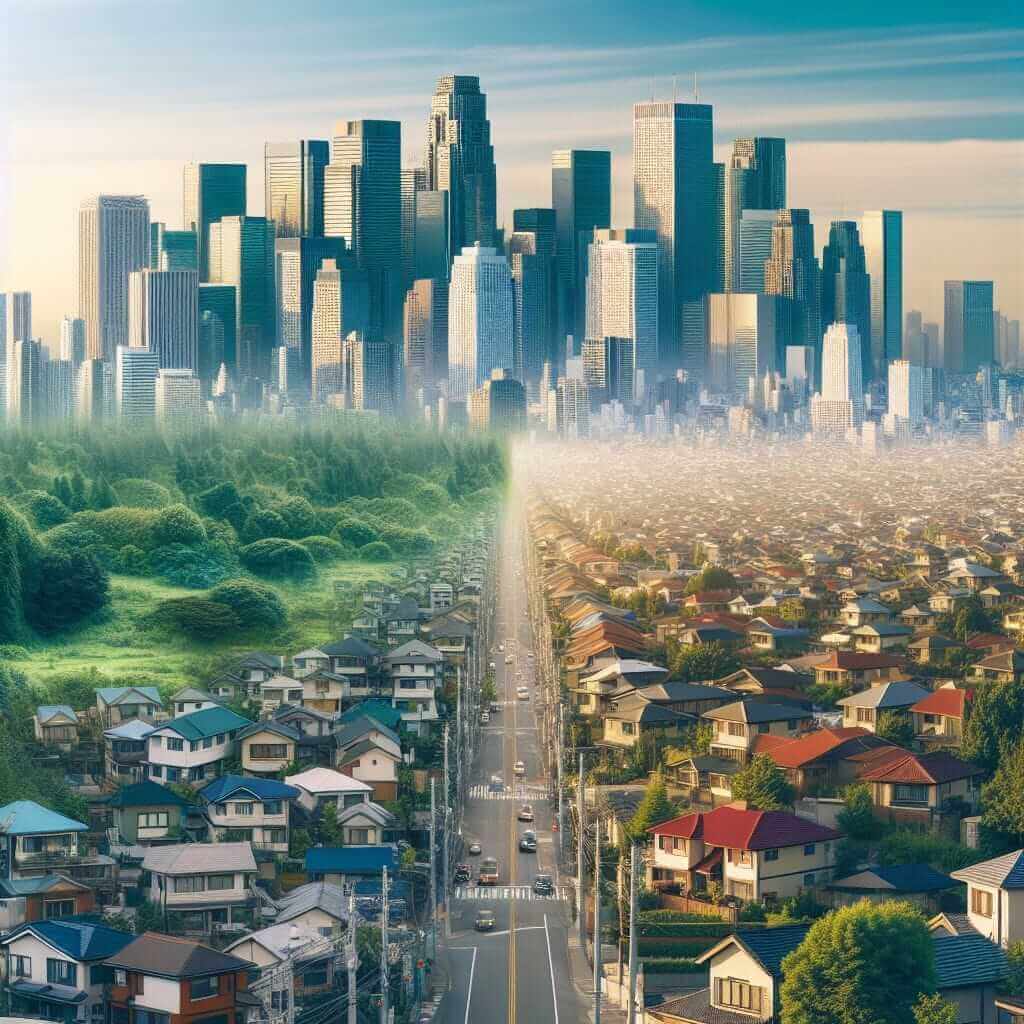Urban sprawl, a term frequently appearing in IELTS Writing Task 2, refers to the uncontrolled expansion of cities into surrounding rural areas. This essay will delve into the detrimental effects of urban sprawl on the environment and provide a sample Band 8 response to guide your IELTS preparation.
Understanding Urban Sprawl and its Environmental Impact
Before diving into the essay, let’s understand the scope of this issue. Urban sprawl often results in:
- Loss of agricultural land: As cities expand, fertile land is sacrificed for housing and infrastructure.
- Increased traffic congestion: Longer commutes become the norm, leading to higher fuel consumption and pollution.
- Habitat destruction: Natural habitats are fragmented, threatening biodiversity.
Here are some IELTS Writing Task 2 questions related to this topic:
- To what extent do you agree that urban sprawl is detrimental to the environment?
- Discuss the negative effects of urban sprawl on the environment and suggest possible solutions.
- Some people believe that urban sprawl is a necessary evil for economic growth. Others argue that its environmental consequences outweigh any economic benefits. Discuss both views and give your own opinion.
Sample Band 8 Essay
Let’s craft a model essay answering the first question:
Question: To what extent do you agree that urban sprawl is detrimental to the environment?
Essay:
Urban sprawl, the uncontrolled expansion of cities into surrounding areas, is a growing concern worldwide. It is widely acknowledged that this phenomenon has far-reaching detrimental effects on the environment. This essay will argue that urban sprawl is indeed highly detrimental, primarily due to its impact on natural resources, pollution levels, and biodiversity.
Firstly, urban sprawl places immense pressure on natural resources. As cities expand outwards, vast areas of forests and agricultural land are cleared to make way for housing developments, shopping malls, and roads. This deforestation leads to soil erosion, reduced water absorption, and increased risks of flooding. Moreover, the increasing demand for water from sprawling urban populations often depletes groundwater reserves and puts a strain on existing water sources, leading to water scarcity.
Secondly, urban sprawl exacerbates pollution levels. The proliferation of cars and longer commutes contribute significantly to air and noise pollution. Exhaust fumes from vehicles release harmful pollutants into the air, impacting respiratory health and contributing to the greenhouse effect. Additionally, the construction industry, a key driver of urban sprawl, generates a considerable amount of waste and dust pollution.
Finally, urban sprawl severely threatens biodiversity. As natural habitats are fragmented and destroyed, plant and animal species lose their homes and struggle to survive. This loss of habitat can lead to the extinction of species, disrupting ecosystems and reducing the overall resilience of the natural environment.

In conclusion, it is undeniable that urban sprawl poses a significant threat to the environment. Its relentless encroachment upon natural areas, coupled with increased pollution and habitat destruction, necessitates urgent action. Governments and urban planners must prioritize sustainable urban development strategies, such as promoting compact city designs, investing in public transportation, and implementing strict regulations to protect natural resources and biodiversity. Failure to address the issue of urban sprawl will have dire consequences for the environment and future generations.
(Word count: 290 words)
Writing Tips and Vocabulary
- Structure: Notice the clear essay structure: Introduction, three supporting paragraphs, and a conclusion.
- Cohesion and Coherence: Use linking words like “firstly,” “secondly,” “moreover,” and “in conclusion” for smooth transitions.
- Academic Language: Employ formal vocabulary like “detrimental,” “exacerbates,” “proliferation,” and “necessitates.”
Key Vocabulary:
- Urban Sprawl: (noun) /ˈɜːrbən sprɔːl/ – The uncontrolled expansion of a city or town into the surrounding countryside.
- Detrimental: (adjective) /ˌdɛtrɪˈmɛntl/ – Causing harm or damage.
- Exacerbate: (verb) /ɪɡˈzæsə(r)beɪt/ – To make something worse.
- Proliferation: (noun) /prəˌlɪfəˈreɪʃ(ə)n/ – A rapid increase in the number or amount of something.
- Biodiversity: (noun) /ˌbʌɪəʊdaɪˈvɜːsɪti/ – The variety of life in the world or in a particular habitat or ecosystem.
Conclusion
Urban sprawl is a complex issue with significant environmental implications. By understanding its causes and consequences, you can write a compelling IELTS essay. Remember to use relevant vocabulary, present well-structured arguments, and support your claims with clear examples. Good luck with your IELTS preparation!